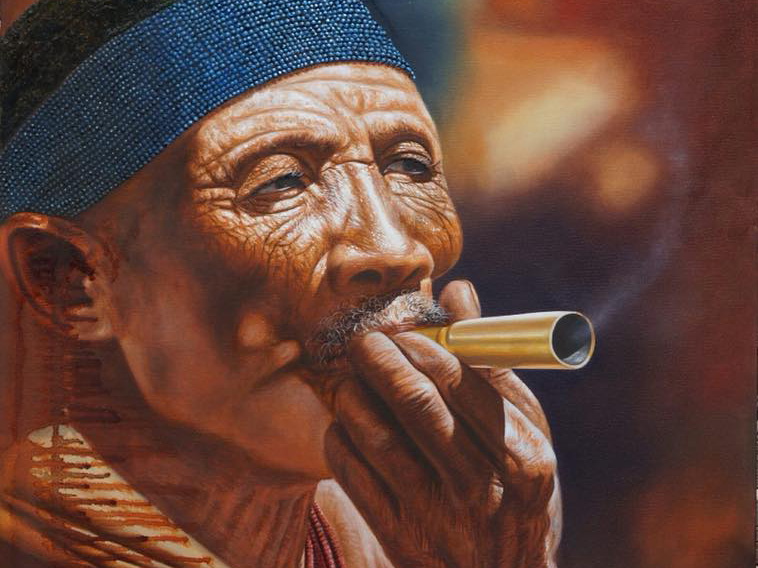The book caters for people who would otherwise not afford paintings
GOSEGO MOTSUMI
Painter and author Wilson Ngoni’s high book sales are an indication that Batswana who largely support his new offering titled “Living with the Brush” are gradually warming up to art. The coffee table book was released late last year and is a celebration and documentation of his works as a professional artist for three decades.
“So far Batswana have shown so much support and this is big,” the elated artist told Time Out. “I am also shipping a lot of books abroad to the USA, Australia, the Czech Republic, South Africa, quite a number to Germany, Italy and France, among others. I have support from people who otherwise cannot afford paintings.”
Ngoni’s second book is an album of a selection of a few paintings randomly picked from an overall body of work that he painted in the active duration of his career. Alongside some images in the book are concise and eloquent write-ups instilled with hope to bring Ngoni’s audience to a certain degree of insightful aptitude.
“I can feed my family and those who benefit from me through this book project,” he says. “I still have more books to sell.”
His work is notable for solid dots of colours that are emblematic of his artistic objective of contributing to the general happiness of humanity because it focuses mainly on the relationship between art and society. Ngoni’s pictorial language shows his fascination for themes of social reality, human experiences, cultural symbolism, common sense, wildlife, as well as obsessive topics of love.
Says the artist himself: “My brush is an umbilical connection between me and my liberation; my work. Most of my paintings and writings have proved to be very enlightening to me. They are so laden with exciting implications that it would be unkind and unfair of me not to share my ideas with others.”
“Living with the Brush” consists of five chapters that include Ngoni’s creative style of painting that he calls ‘meleko.’ This style of painting allows his audience to endow his works with meaning in their intensified and readily extended experience that declares the works as a unique phenomenon.
“In every case when people look at my paintings, their imaginations are stimulated because I allow them to be able to share directly in my vision as an artist,” he explains. “This is their initial and ultimate purpose of looking at works of art and be able to benefit from the imagination of the creative artist.”
In other chapters, he features face profiles that bring out different emotions of disappointment, damaged souls, heartbreaks, brutal pain, happiness, and love. In the lifestyle chapter, he paints how we feel as a people. The wildlife chapter features the big five and other small species while the last chapter features still life paintings.




